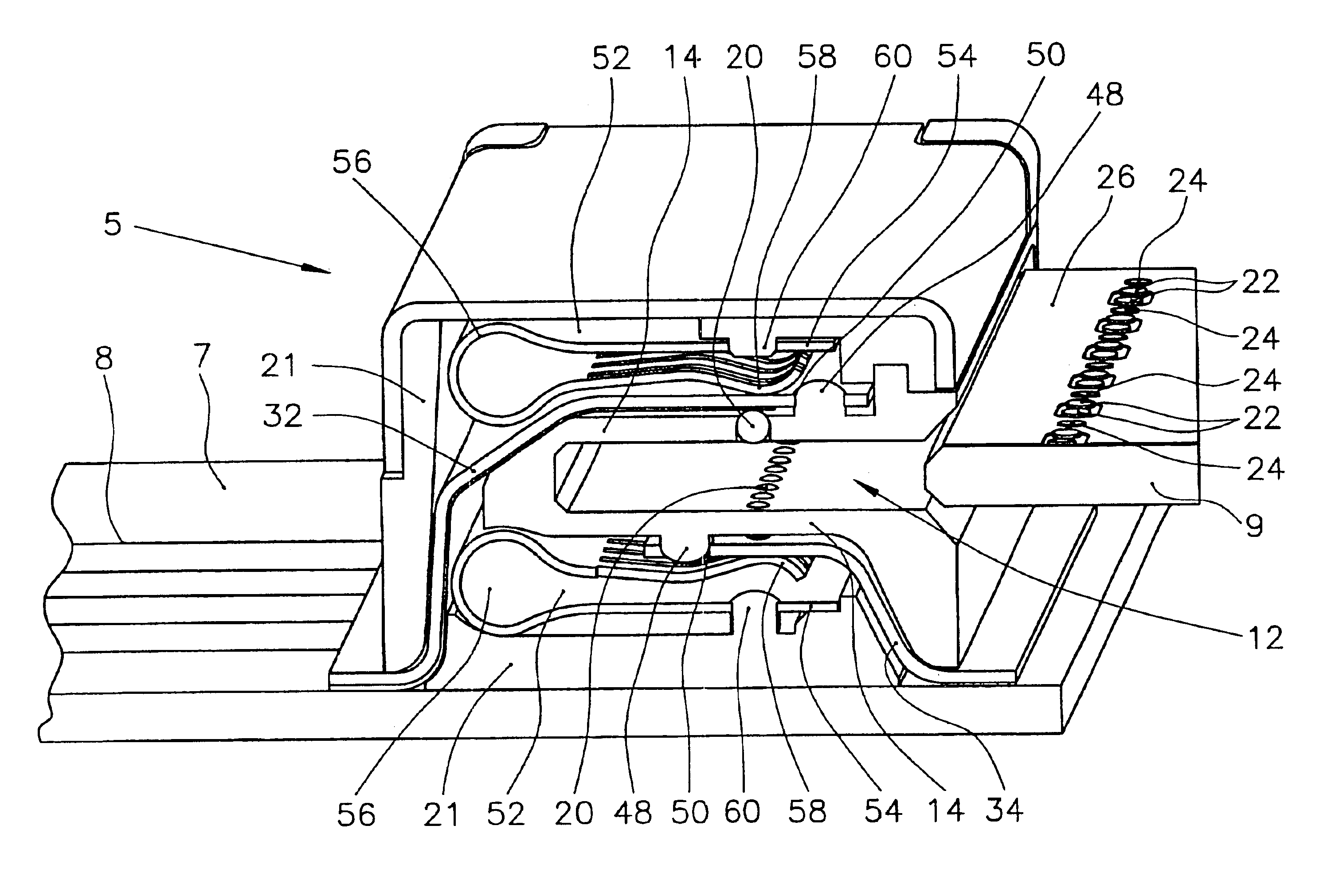Connector with movable contact elements
a technology of contact elements and contact elements, which is applied in the direction of electrically conductive connections, coupling device connections, rotary current collectors, etc., can solve the problem that the spring itself is hardly suited for bonding, and achieve good radiofrequency properties
- Summary
- Abstract
- Description
- Claims
- Application Information
AI Technical Summary
Benefits of technology
Problems solved by technology
Method used
Image
Examples
first embodiment
FIG. 1 shows a connector 5 in accordance with a This connector is arranged on a printed circuit board 7, which is provided with schematically indicated conductor paths 8. Into the connector 5, a plug-in card 9 can be inserted such that conductor paths of the plug-in card 9 are bonded electrically.
As central component, the connector 5 has a carrier 10 in which a receiving space 12 of rectangular cross-section is formed for the plug-in card 9. The carrier 10 is made of an electrically insulating material, in particular plastics. In the two larger side walls 14 of the carrier 10, there is formed a plurality of guide holes 16 disposed one beside the other in a row, which extend as through hole from the receiving space 12 through the side wall 14 towards the outside. Each guide hole 16 constitutes a bore of circular cross-section, and on its side facing the receiving space 12 a collar 18 is provided, whose inside diameter is smaller than the diameter of the remaining portion of the guid...
second embodiment
The advantage of the second embodiment consists in that the guide holes can be designed to continuously have the same diameter; there is not required a constriction of the guide hole 16, in order to form a stop for the contact element. Another advantage should consist in that contact pins are basically better suited for the transmission of RF signals than contact balls.
PUM
 Login to View More
Login to View More Abstract
Description
Claims
Application Information
 Login to View More
Login to View More - R&D
- Intellectual Property
- Life Sciences
- Materials
- Tech Scout
- Unparalleled Data Quality
- Higher Quality Content
- 60% Fewer Hallucinations
Browse by: Latest US Patents, China's latest patents, Technical Efficacy Thesaurus, Application Domain, Technology Topic, Popular Technical Reports.
© 2025 PatSnap. All rights reserved.Legal|Privacy policy|Modern Slavery Act Transparency Statement|Sitemap|About US| Contact US: help@patsnap.com



